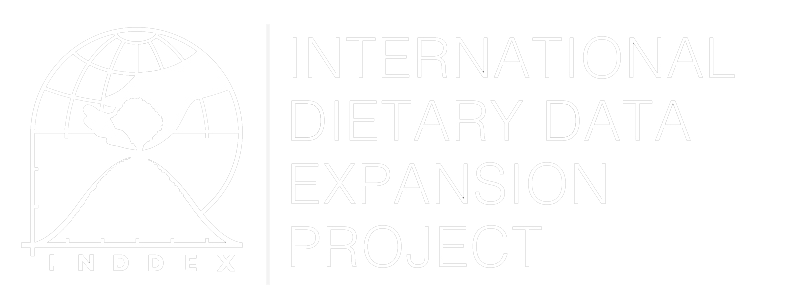Dietary Energy Supply kcal/capita/day
Overview
The dietary energy supply (kcal/capita/day) is an indicator calculated at the national level that serves as an estimate of the amount of calories from foods available for human consumption. This indicator does not yield any information on the affordability, access, or consumption of dietary energy by different population groups within a given country, which means that sufficient national supply does not ensure sufficient dietary energy consumption by nutritionally vulnerable groups. Nevertheless, it can be useful for determining whether a country's food supply contains enough dietary energy to meet aggregate population needs, and whether measures need to be taken to improve the amount of dietary energy available for the population.
This indicator can be accessed through FAO's FAOSTAT website. FAOSTAT contains national-level Food Balance Sheet (FBS) data, which are used to compute Dietary Energy Supply. Additional indicators in the Data4Diets platform related to quantity of the food supply that also use FBS data include depth of food deficit and national dietary energy available from non-staples, among others. Alternatively, if users are interested in calculating a similar measure but with household-level data, they should refer to the household dietary energy consumption indicator which relies on Household Consumption and Expenditure Survey (HCES) data.
Method of Construction
This indicator can be accessed on the FAOSTAT website by selecting the Data tab and then selecting "Food Balances (2010-)" or "-2013, old methodology" under the "Food Balances" heading (depending on the time period of interest). Users can view and download the indicator data for a given country and year (or span of years) by selecting "Food supply (kcal/capita/day)" under the Elements section and selecting "Grand Total + (Total)" under the Items Aggregated section.
FAO calculates the national estimate of total food supply using data from a number of sources, including government agencies, marketing authorities, and industrial/manufacturing surveys, among others (FAO, 2001). This national estimate is derived from the sum of the elements of quantities of food from supply (production, import, and stock variation) minus the elements of quantities of food from utilization (export, manufacturing, feed, seed, waste, and other uses) for each commodity, expressed in raw equivalent. FAOSTAT converts the quantity of food to the dietary energy content of the edible portion of each type of food available for human consumption. This value is then divided by the population size and by 365 days to calculate the per capita daily dietary energy available for human consumption. This calculated value (kcal/capita/day) is available from FAOSTAT for individual food items and food groups as well as for the total food supply.
Uses
When data from individual dietary surveys or household surveys are unavailable, this indicator serves as a proxy for national dietary energy consumption (FAO, 2017), though technically it is not an indicator of intake but rather an indicator of food available for consumption. Because these data are available annually for nearly all countries, it is a useful indicator for cross-country comparisons and analyses of trends over time within a country. When the dietary energy supply is disaggregated by food groups, the share of total dietary energy supply from each food group can offer a snapshot of the nutritional quality of the food supply.
This indicator also serves as the basis for other indicators of food security and nutrition, such as the Average Dietary Energy Supply Adequacy (ADESA) indicator (Lele et al., 2016), the Prevalence of Undernourishment, and the depth of food deficit indicator.
Strengths and Weaknesses
One benefit of this indicator is that it is available for more than 170 countries dating back to 1961. The data are regularly updated by FAO using a common methodology. The country-level data are provided by national governments and are centrally located on the FAOSTAT website.
A weakness of this indicator is that it does not reflect actual energy consumption but rather energy availability. In addition, since the indicator is a national-level estimate, it cannot be disaggregated by age or sex, or by any geographic scale smaller than the national level, nor does it capture disparities in dietary energy availability (or consumption) across population groups or seasons, as is possible with individual- or household-level dietary data. This indicator is limited to the foods that appear in the FBS and therefore does not capture all possible sources of dietary energy (e.g. insects or wild foods).
Although the FBS accounts for food wasted along the food chain, it does not account for losses incurred at the retail distribution level, plate waste, or other non-food uses at the household or individual level (Lele et al., 2016), and stock variations are not accurately captured.
Data Source
The main source of data for this indicator is the FAO FBS data on the FAOSTAT website, which disaggregates elements of utilization and supply, and estimates total food available for human consumption. FAO pairs this information with food composition data to produce information on the national supply of energy and macronutrients (per capita/day). In addition, Household Consumption and Expenditure Surveys (HCES) could be used to calculate a similar indicator, such as household average dietary energy consumption. Alternatively, 24-hour Dietary Recall or Weighed Food Records could be used to calculate total individual energy intake.
Links to Guidelines
Links to Case Studies
Links to Illustrative Analyses
- Del Gobbo et al., (2015). "Assessing global dietary habits: A comparison of national estimates from FAO and the Global Dietary Database."
- FAO, (2017). "The State of Food Security and Nutrition in the World."
- Sheehy et al. (2019). Trends in energy and nutrient supply in Ethiopia: a perspective from FAO food balance sheet. Nutrition Journal.
